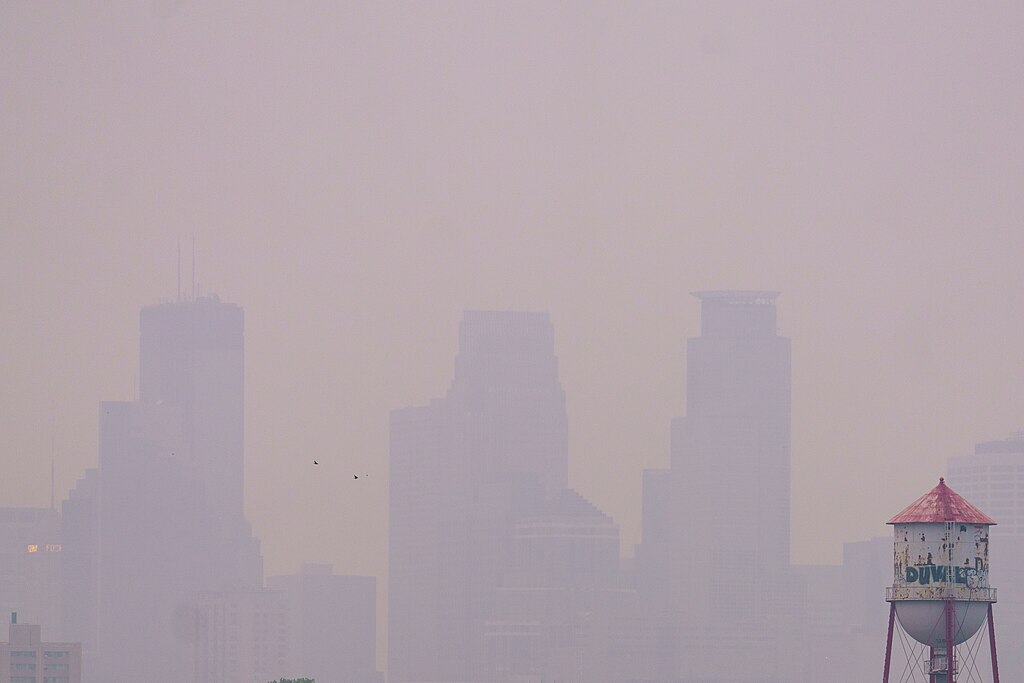Safeguarding a breath of indoor fresh air

For several days this summer, Toronto’s air quality was the worst in the world due to wildfire smoke from northern Ontario and Quebec. We were advised to stay indoors if we could and use a HEPA filter to remove any smoke-related particulate matter that entered the home.
A HEPA filter removes other particulates as well, including dust, mold spores, bacteria and pollen. It’s important to know though that the HEPA filter doesn’t capture harmful gases, fumes and volatile organic compounds.
The first order of business to ensure healthy indoor air is to avoid and remove harmful sources. Many builders use conventional adhesives, paint and other materials that may be the cheapest on the market but are also costly health-wise because they release toxic gases.
Our go-to reference at Greening Homes is the Red List by the Living Building Challenge. The Red List classifies materials, chemicals and elements in building products that pose serious risk to humans and the ecosystem. We ensure that the products we use in our projects are as low risk as possible.
The Red List is handy to help you decide what furniture to bring into your home. One chemical you can expect on the List is formaldehyde, which is commonly used to bind furniture and particle board and is a known carcinogen. Before buying, check the product label. Find out what else to avoid by visiting living-future.org/red-list.
Another culprit is the gas stove. For some people, including me, this one is hard to give up. We love to cook on it. However, gas stoves release Nitrogen Dioxide (N02) which can contribute to lung and heart diseases and is certainly hard on people with pre-existing respiratory conditions.
A properly sized and positioned hood fan can minimize N02 in your home. Unfortunately, most exhaust fans are undersized. A properly-sized exhaust fan should almost seem over-sized and cover the entirety of your stovetop.
When using a gas stove, be mindful of any other ventilation system, such as the bathroom exhaust fan, and room HEPA filters running at the same time. If these systems are more powerful than the hood fan they could be pulling the gas and circulating it throughout your home.
The ideal course of action is to replace the gas stove with induction, which is better for your health and is more efficient than their gas counterpart.
The second order of business after removing harmful substances is to install an energy efficient ventilation system to circulate fresh air, such as Heat Recovery Ventilation (HRV) and Enthalpy Recovery Ventilation (ERV). This is especially important if your home has been recently renovated and is fairly air tight. Without it, stale air is fertile ground for mold and other toxins, causing what is referred to “sick building syndrome.”
HRV and ERV transfer heat, but I prefer the latter because it transfers moisture too, helping to control humidity in the summer.
Given that we spend on average 90 percent of our time inside, we cannot afford to take indoor air quality for granted.
Chris Phillips, Greening Homes’ founder and President, is an expert contributor of Neighbours of High Park Magazine. This article appeared in the September 2023 issue.
Photo: Canadian wildfires not only reached Toronto but U.S. cities like Minneapolis. Credit: Chad Davis from Minneapolis, United States, CC BY 2.0 https://creativecommons.org/licenses/by/2.0, via Wikimedia Commons.